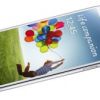 Apple and Samsung accountes for 52 percent of all global smartphone sales in fourth quarter of 2012 according to a report by Gartner. Overall, mobile phone sales declined across the globe by 1.7 percent last year, the last time when sales fell were in 2009.
Apple and Samsung accountes for 52 percent of all global smartphone sales in fourth quarter of 2012 according to a report by Gartner. Overall, mobile phone sales declined across the globe by 1.7 percent last year, the last time when sales fell were in 2009.
Below is the report :
“The last time the worldwide mobile phone market declined was in 2009,” said Anshul Gupta, principal research analyst at Gartner. “Tough economic conditions, shifting consumer preferences and intense market competition weakened the worldwide mobile phone market this year.”
Demand for feature phones remained weak in 2012 and in the fourth quarter. Feature phone sales totaled 264.4 million units in the fourth quarter of 2012, down 19.3 percent year-on-year. Gartner analysts expect feature phones sales to continue to fall in 2013. Gartner predicts that sales of worldwide smartphone sales to end users will be close to 1 billion units in 2013, and overall mobile phone sales to end users are estimated to reach 1.9 billion units.
In the fourth quarter of 2012, Apple and Samsung together raised their worldwide smartphone market share to 52 percent from 46.4 percent in the third quarter of 2012. Samsung ended the year in the No. 1 position, in both worldwide smartphone sales and overall mobile phone sales.
“There is no manufacturer that can firmly lay claim to the No. 3 spot in global smartphone sales,” said Mr. Gupta. “The success of Apple and Samsung is based on the strength of their brands as much as their actual products. Their direct competitors, including those with comparable products, struggle to achieve the same brand appreciation among consumers, who, in a tough economic environment, go for cheaper products over brand.”
Huawei had a good fourth quarter, which helped it reach the No. 3 position among smartphone vendors for the first time. In 2012, Huawei sold 27.2 million smartphones to end users, up 73.8 percent from 2011. Both, the Ascend D2 and Mate announced at this year’s Computer Electronics Show (CES) aim to grow the company’s brand perception as a premium product and increase its mobile phone margins. Gartner analysts said international markets are key for Huawei’s growth in 2013, as well as being able to improve its product mix to a higher tier.
In the fourth quarter of 2012, Samsung’s overall smartphone sales continued to accelerate totaling 64.5 million units, up 85.3 percent from the fourth quarter of 2011. In 2012, Samsung totaled 384.6 million mobile phones sales, of which 53.5 percent (up from 28 percent in 2011) were smartphone sales.
Samsung’s resources and ability to build a broad market reach is an advantage that no other competitor can easily match. However, the competition will intensify in 2013 as players such as Sony and Nokia improve. “With Samsung commanding over 42.5 percent of the Android market globally, and the next vendor at just 6 percent share, the Android brand is being overshadowed by Samsung’s brand with the Galaxy name nearly a synonym for Android phones in consumers’ mind share,” said Mr. Gupta.
Apple’s sales reached 43.5 million units in the fourth quarter of 2012, up 22.6 percent year-on-year. In 2012, Apple totaled 130 million smartphone sales worldwide. While the demand for iPhones in the fourth quarter remained strong, consumers’ demand favored the less expensive iPhone 4 and 4S models. The arrival of the iPad Mini also created a dilemma for some users when deciding if to upgrade an iPhone 4 or iPhone 4S to an iPhone 5, or buy the new tablet.
In the fourth quarter of 2012, Nokia’s handset sales improved from a good response to its Asha mobile phones and the launch of the latest Lumia Windows Phone 8 models. It was not sufficient to stop Nokia to lose further market share, totaling 18 percent, the lowest it has ever been. In 2012, Nokia reached 39.3 million smartphone sales worldwide, down 53.6 percent from 2011. Analysts said that aside from the continued focus on Lumia, Nokia needs to build on momentum around Asha in 2013 by adding devices and apps to further enhance its overall value proposition and, in doing so, moving up the price point slightly to achieve better margins breaching the gap left by Symbian.
Table 1
Worldwide Mobile Phone Sales to End Users by Vendor in 4Q12 (Thousands of Units)
Company
4Q12
Units
4Q12 Market Share (%)
4Q11
Units
4Q11 Market Share (%)
Samsung 106,957.7
22.7
93,830.3
19.6
Nokia 85,054.8
18.0
111,699.4
23.4
Apple 43,457.4
9.2
35,456.0
7.4
ZTE 16,160.6
3.4
18,915.1
4.0
LG Electronics 14,981.3
3.2
16,938.3
3.5
Huawei Technologies 13,679.1
2.9
13,966.1
2.9
TCL Communication 11,097.6
2.4
10,695.3
2.2
Lenovo 8,305.4
1.8
5,206.3
1.1
Sony Mobile Communications 7,946.6
1.7
8,935.7
1.9
Motorola 7,822.2
1.7
10,075.3
2.1
Others 156,613.7
33.2
151,985.1
31.8
Total 472,076.4
100.0
477,703.0
100.0
Source: Gartner (February 2013)
Table 2
Worldwide Mobile Phone Sales to End Users by Vendor in 2012 (Thousands of Units)
Company
2012
Units
2012 Market Share (%)
2011
Units
2011 Market Share (%)
Samsung 384,631.2
22.0
315,052.2
17.7
Nokia 333,938.0
19.1
422,478.3
23.8
Apple 130,133.2
7.5
89,263.2
5.0
ZTE 67,344.4
3.9
56,881.8
3.2
LG Electronics 58,015.9
3.3
86,370.9
4.9
Huawei Technologies 47,288.3
2.7
40,663.4
2.3
TCL Communication 37,176.6
2.1
34,037.5
1.9
Research In Motion 34,210.3
2.0
51,541.9
2.9
Motorola 33,916.3
1.9
40,269.1
2.3
HTC 32,121.8
1.8
43,266.9
2.4
Others 587399.6
33.6
595886.9
33.6
Total 1,746,175.6
100.0
1,775,712.0
100.0
Source: Gartner (February 2013)
In the smartphone operating system (OS) market (see Table 3), Android captured more than 50 percent of the OS market, widening the gap with Apple’s iOS. While Android grew 87.8 percent in the fourth quarter of 2012, RIM declined 44.4 percent in the same period. Microsoft had a better fourth quarter, with its share growing 1.2 percentage points, and its smartphone sales increasing 124.2 percent year-on-year.
“2013 will be the year of the rise of the third ecosystem as the battle between the new BlackBerry10 and Widows Phone intensifies,” said Mr. Gupta. “As carriers and vendors feel the pressure of the strong Android’s growth, alternative operating systems such as Tizen, Firefox, Ubuntu and Jolla will try and carve out an opportunity by positioning themselves as profitable alternatives.”
Table 3
Worldwide Smartphone Sales to End Users by Operating System in 4Q12 (Thousands of Units)
Operating System
4Q12
Units
4Q12 Market Share (%)
4Q11
Units
4Q11 Market Share (%)
Android 144,720.3
69.7
77,054.2
51.3
iOS 43,457.4
20.9
35,456.0
23.6
Research In Motion 7,333.0
3.5
13,184.5
8.8
Microsoft 6,185.5
3.0
2,759.0
1.8
Bada 2,684.0
1.3
3,111.3
2.1
Symbian 2,569.1
1.2
17,458.4
11.6
Others 713.1
0.3
1,166.5
0.8
Total 207,662.4
100.0
150,189.9
100.0
















